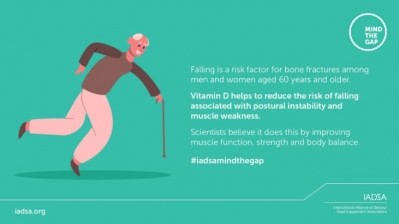Study suggests novel approach for treating vit D deficiency

Patients with intestinal malabsorption of vitamin D, such as those with cystic fibrosis, inflammatory bowel diseases, gastric bypass surgery, and intestinal lymphangiectasia, are unable to efficiently absorb vitamin D, putting them at an increased risk for vitamin D deficiency.
Patients with obesity are also susceptible to vitamin D deficiency as vitamin D derived from intestinal absorption and cutaneous synthesis is
diluted in a larger body pool of fat. In addition, patients with obesity may have reduced liver 25-hydroxylation of vitamin D due to obesity-associated fatty liver.
Studies have suggested that a more water-soluble form of vitamin D3, known as 25-hydroxyvitamin D3[25(OH)D3], is more bioavailable than vitamin D3, causing a more rapid and sustained increase in serum 25(OH)D3 concentrations. One of the explanations is that 25(OH)D3 is more hydrophilic than vitamin D3; therefore, it could be absorbed directly into the portal system without being cleared in the lymphatic system. 25(OH)D is also thought to be distributed into the circulation without being diluted into the adipose tissue thus, theoretically, 25(OH)D absorption and distribution would be less affected in patients with malabsorption and obesity.
The current study therefore aimed to discover if 25-hydroxyvitamin D3 was more effective than the same dose of vitamin D3 in improving the vitamin D status of malabsorptive patients and healthy participants with differing BMI.
A randomized, double-blind crossover trial was performed in six malabsorptive patients and 10 healthy participants, with varying BMI, who were given 900 µg of either vitamin D3 or 25(OH)D3 orally followed by a pharmacokinetic study (PKS).
After ≥28 d from the first dosing, each participant returned to receive the other form of vitamin D and undergo another PKS. For each PKS, serum vitamin D3 and 25(OH)D3 were measured at baseline and at 2, 4, 6, 8, and 12 h and days 1, 2, 3, 7, and 14. Pharmacokinetic parameters were calculated.
The researchers observed that compared to healthy adults only about 36 percent of orally ingested vitamin D3 was found in the blood of patients with fat malabsorption syndromes including patients who had gastric bypass surgery.
When the same adults ingested 25-hydroxyvitamin D3, the patients with fat malabsorption syndromes were able to absorb it as well as the healthy adults thereby raising their vitamin D status to the same degree.
A similar observation was made in the obese subjects compared to the healthy controls.
“This vitamin D metabolite is better absorbed in patients with fat malabsorption syndromes and since it is not as fat soluble, it does not gets diluted in the body fat and is effective in raising and maintaining blood levels of 25-hydroxyvitamin D in obese people,” explained corresponding author Michael F. Holick, PhD, MD, professor of medicine, physiology and biophysics and molecular medicine at Boston University School of Medicine, "Therefore using 25-hydroxyvitamin D3 could be a novel approach for treating vitamin D deficiency in patients with fat malabsorption syndromes and obese adults."
Source: American Journal of Clinical Nutrition
Holick. M. F., et al
"A pilot-randomized, double-blind crossover trial to evaluate the pharmacokinetics of orally administered 25-hydroxyvitamin D3 and vitamin D3 in healthy adults with differing BMI and in adults with intestinal malabsorption"






